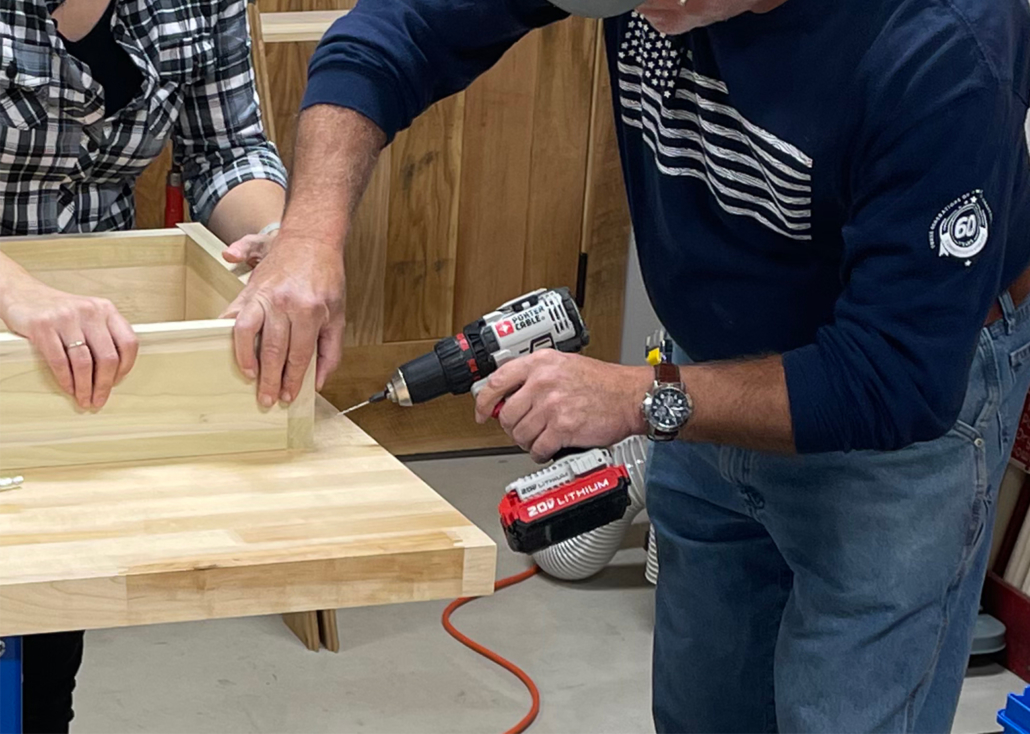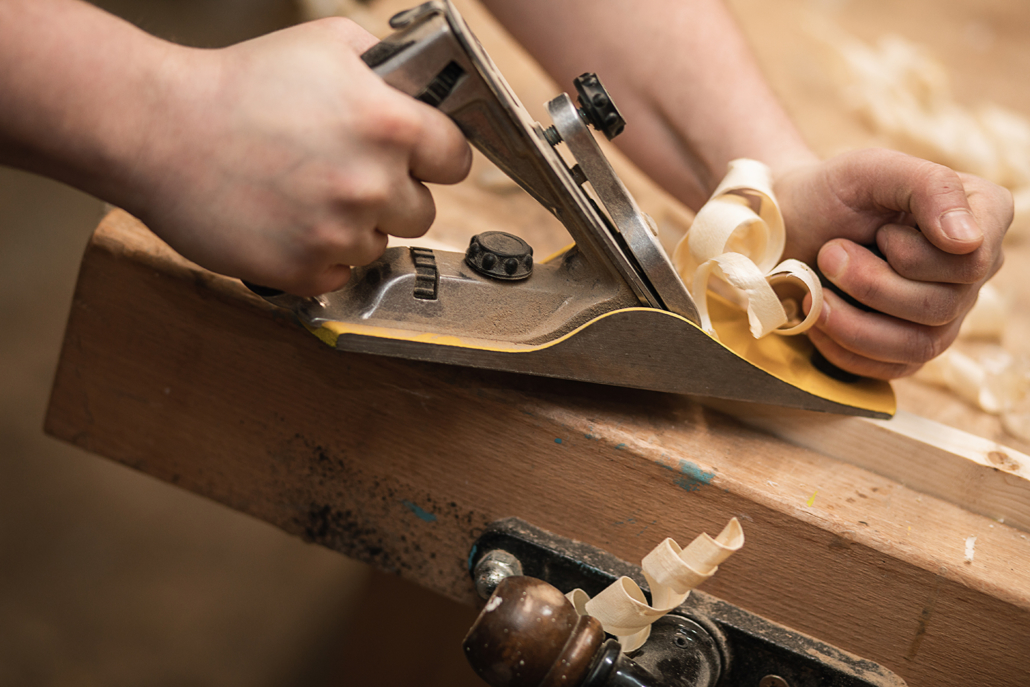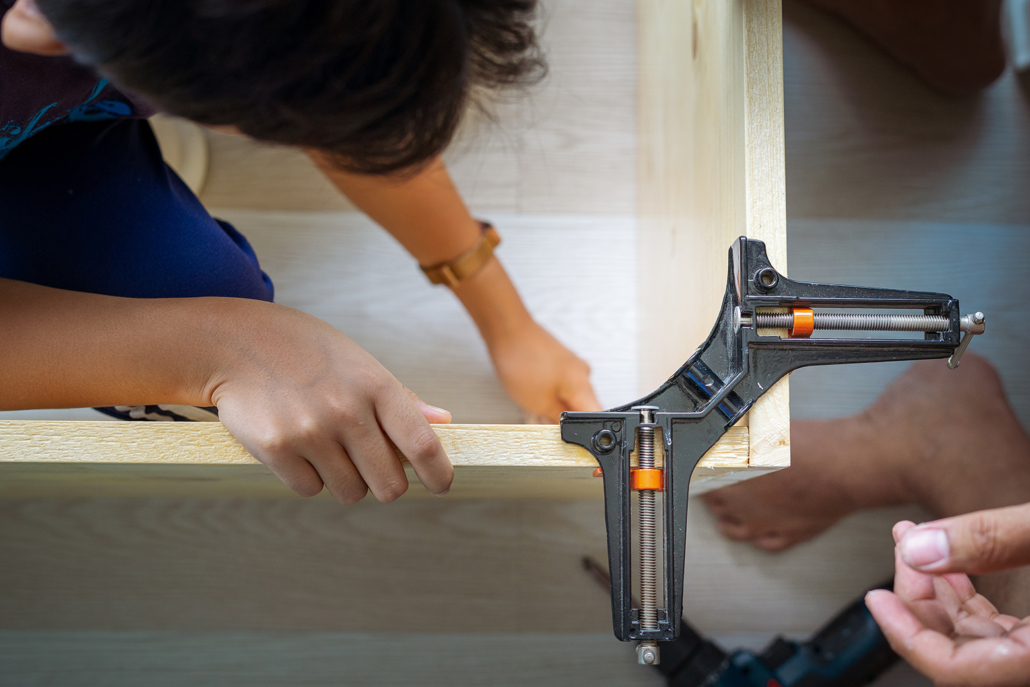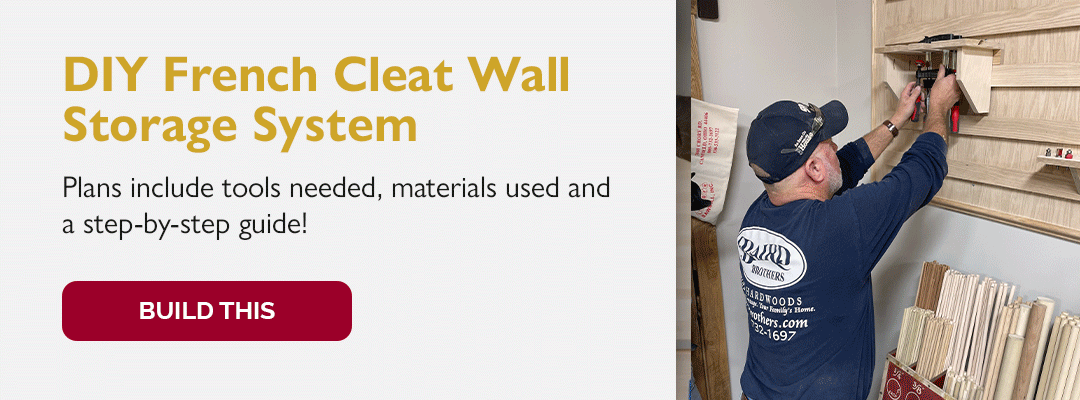10 Essential Woodworking Tools: From DIY Beginners to Experienced Craftsmen
Whether you’re a beginner woodworker or an experienced craftsman, the right tools make or break a woodworking project. Of course, every situation is different, but there are some basic hand tools and pieces of power equipment that every woodworker needs in their workspace or woodshop.
Whether you’re building bookshelves, cabinets, or something completely new and unique, the essential woodworking tools listed below will get the job done and help you create some truly beautiful DIY projects.
Personal Protection Equipment
Safety should be top-of-mind before starting any woodworking project. Always wear safety glasses while making cuts to protect your eyes from flying sawdust. And, consider ear protection when using loud power tools since extended exposure can cause damage to the inner ear.
It should go without mention to use extreme caution when working with any type of saw. Blade guards are a great tool in creating a barrier between your hands and the saw blade. Remember, whether using a safety tool like a blade guard or push stick, always keep your hands to the side of the saw blade to prevent injury.
Tape Measure
Few, if any, carpentry projects can be completed without precise measurements. Whether you’re ripping a board to size or installing new custom built-ins, a tape measure is imperative. In fact, it’s one of the handiest tools you’ll ever use.
From basic woodworking to intricate designs, a tape measure is a crucial part of the tool belt. They’re not just for beginning woodworkers; every craftsman needs a tape measure to ensure proper measurements.

Power Drill/Cordless Drill
There’s no way around it. Drilling holes is a part of almost every woodworking project! Drills are an essential power tool, as are a variety of drill bits.
There are options for both corded and cordless drills, so it’s important to assess your woodworking shop before you buy. You can also opt for a drill press – a benchtop power drill that delivers more power and precision.
Drills are a versatile piece of workshop equipment and can be used in tandem with a jig, like the Kreg Pocket Hole System, to make angled pocket holes.

Your Saw(s) of Choice
No matter what type of saw you choose, first things first – make sure your saw blades are in good condition! Depending on the project(s) at hand, a variety of saws may be needed, because the right saw can make all the difference (shaving off hours of wasted time from using the wrong equipment).
Professional woodworkers likely have many, if not all, of the saws listed below, but if you’re just starting out in DIY or woodworking, choose the best saw for your needs.
Hand Saw
The most basic type of saw is the hand saw. It’s a long piece of metal with teeth on the saw to cut through wood, and it’s referred to as a hand saw because it runs on elbow grease (aka no external power).
There are different types of hand saws; some have two handles (one on each end of the blade), some have one (and are traditionally what you think of when you hear the word “hand saw”). A hand saw is a great choice for the beginning woodworker who needs to make basic cuts.
Circular Saw
Used to cut many of the same things as a hand saw, a circular saw is a heavy-duty, portable power tool that uses a circular saw blade for reliable cuts and straight edges. A circular saw is an essential tool for cutting lumber and other materials like masonry and metal.
Miter Saw
A miter saw is a tool that allows you to make angled cuts on materials of varying width, guaranteeing precision for cross cuts and miter cuts.
A compound miter saw, by comparison, is more complex with the ability to produce crosscuts, miter cuts, bevels, and compound cuts. A compound miter saw, or a sliding compound miter, is needed for projects that include crown mouldings.
Table Saw
A table saw is a circular saw blade mounted on an arbor (unlike the circular saw, which is more portable). The table saw offers versatility; it can make any type of cut the miter saw can make and more, including cross-cut, ripping cut, rabbet cut and dado cut.
Since the table saw comes attached to its own mount, it frees up space on your workbench, but takes up more room in the shop.
Jigsaw
A jigsaw is a type of power saw that is used to cut curves and holes in a piece of wood. It’s essentially a handheld power tool with a narrow vertical blade, and the best jigsaws have variable speeds to control the cutting process.
Bandsaw
Like a jigsaw, band saws are important if you’re making items with irregular/curved shapes, however the two tools aren’t necessarily interchangeable. Bandsaws are able to saw much larger pieces of wood and will need a dedicated space in your shop.
Track Saw
If you’re ripping boards or cutting across panels, you might want to invest in a track saw. A track saw gets its name honestly – the saw is attached to a track that accurately guides the saw in a straight line. Its ability to make long, precise cuts give it an advantage over a table or circular saw. Plus, you won’t need clamps!
In a recent episode of Build It With Baird, we designed a French cleat shelf for our shop – Studio 3B – where we used both our table saw and miter saw (along with several other helpful tools, like the compact router and Kreg Pocket Hole Jig). Check it out and consider making one for yourself!
Wood Router
Routers cut patterns, edges, grooves and other designs. They’re a must-have to any woodworker and a variety of router bits are available (common ones include chamfer, round over, dovetail and cove).

Wood Planer
A planer smooths and flattens wood, while reducing thickness, when needed. There are a few different types of planers, and if you’re new to woodworking, it can be tricky to know which one is the best fit for your project.
Manual/handheld planers have been used for centuries, but can take a lot of time and muscle. A block plane allows you to get thin shavings from the piece of wood – great for removing glue or fine layers to meet measurements or limited tolerances.
Chisels are another type of planer used for smaller cleanup functions, reaching into corners or joinery.
There are also power tool options, including electric hand planers, benchtop planers and stationary machines.
Nail Gun
For quick and efficient woodworking, a nail gun is an essential tool. It’s used to assemble projects quickly by attaching pieces together with nails (hence the name), and is significantly faster than the traditional hammer and nail/screwdriver and screw route!
Sanding Tools
Sanding is the only way to achieve a finished, uniform, smooth surface. Sanding is especially important before painting or staining so that the new color is even across the entire piece of wood. And let’s be honest, no workpiece will look finished without it.
The most basic way to sand down a piece of wood is by using sandpaper. Sandpaper’s effectiveness depends on how heavy-duty the paper is (grits can range from extra course to very fine) and how much force you put behind it.
An orbital sander is the power tool version of sandpaper that does most of the hard work for you, sanding in a circular motion. There’s also the option of a random orbital sander, which also moves back and forth, and a belt sander, which is often brought in for larger projects.

Clamps or a Vise
Most DIY woodworking projects involve some type of gluing or joinery. Clamps hold the pieces of wood together so that the glue or binding agent can join the work pieces together.
A vise (aka a heavy-duty clamp, usually with a larger contact area) can securely hold your workpiece down on your workbench. Anytime you need to hold a piece of wood still or hold two pieces together, a clamp or vise is your best friend.
Combination Square
Similar to that tape measure we mentioned earlier, a combination square is a must-have for any woodworker. You can use it to check corners, look for plumb edges, mark cuts or transfer precise measurements. It’s a small but mighty tool that should always be in your toolbelt.
Organize Your Woodworking Tools and Get to Work!
Before you start your next project, make sure you have the 10 essential woodworking tools listed above, and you’ll be able to hit the ground running.
Then after you have everything in place, consider maximizing your shop space by incorporating our free plans for a high-quality French cleat shelf storage unit. A French cleat shelf offers the customizable organization of all your hand tools, drill bits and more! That video tutorial and more is available on our Baird Brother’s content studio.
Everyday is a good day if you’re making sawdust!




